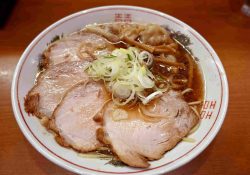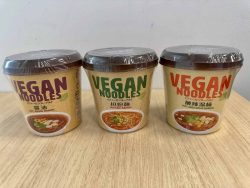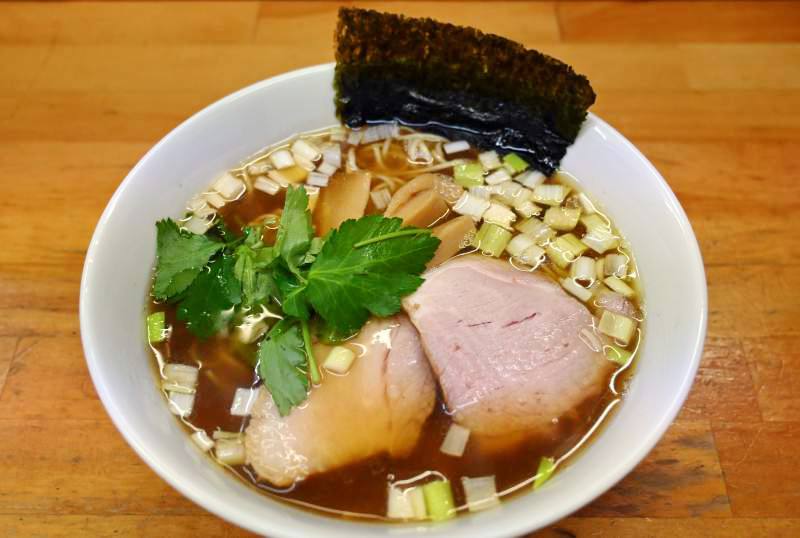
13:39 JST, August 30, 2022
Many of Tokyo’s ramen shops are somewhat modest in size — not least because of the capital’s high rents. But Iikao, located near the Togenuki Jizo shopping street in Sugamo, is small even by Tokyo standards, with only four seats at the counter. The easy-going owner of the Showa-era-like store serves up conscientiously prepared fare and my visit left me with warm feelings of nostalgia and a deep sense of satisfaction.
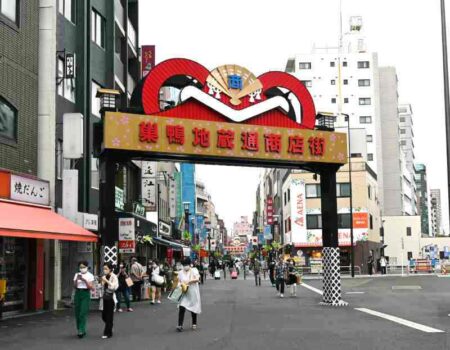
The entrance to Sugamo Jizo-dori shopping street in front of JR Sugamo Station
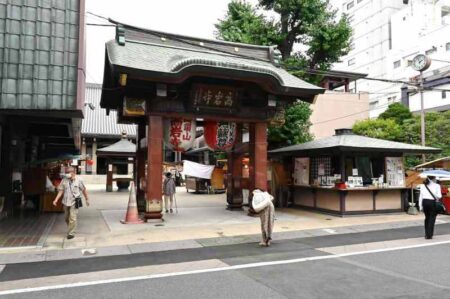
Koganji temple, popularly known as “Togenuki Jizo-son”
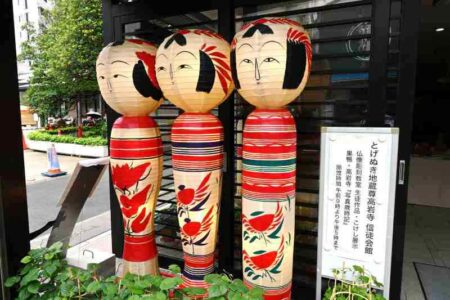
Kokeshi dolls are seen at the entrance of Koganji temple.
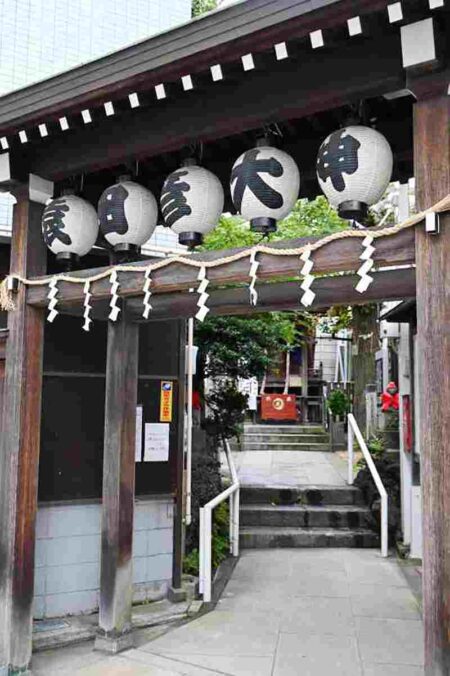
Koshinzuka is located next to the shop.
I alighted at Sugamo Station on the JR Yamanote Line and found the entrance to Sugamo Jizo-dori Shopping Street — often referred to as “Grandma’s Harajuku” — right in front of me. I’ve lived in Tokyo for a long time, but this was my first visit to Grandma’s Harajuku. It was a hot day, and, perhaps because of this, there were few people out and about. After walking along the street for about 10 minutes, I came across Koshinzuka, a roadside small shrine dedicated to Shomen Kongo. Iikao sits right next to it and is only a one-minute walk from Koushinzuka Station on the tramcar-based Toden Arakawa Line.
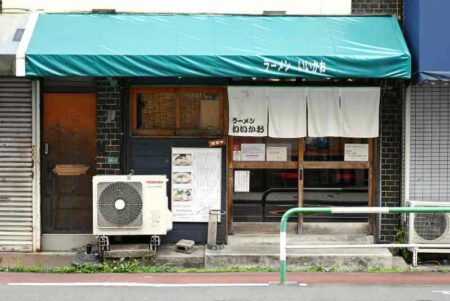
An exterior view of Iikao
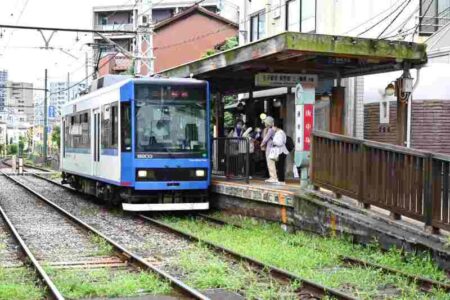
Koshinzuka Station on the Toden Arakawa Line is a one-minute walk from Iikao.
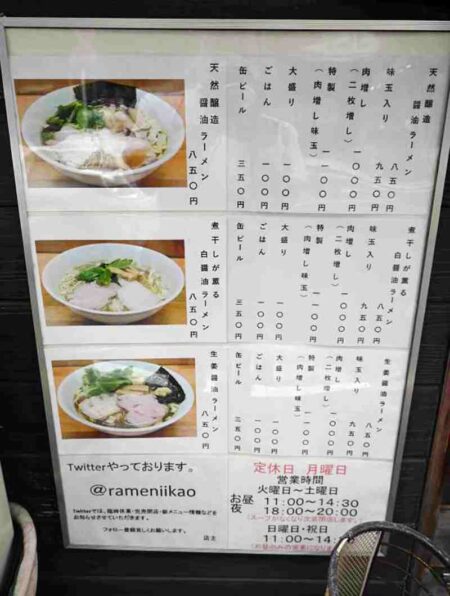
A menu is posted at the shop entrance.
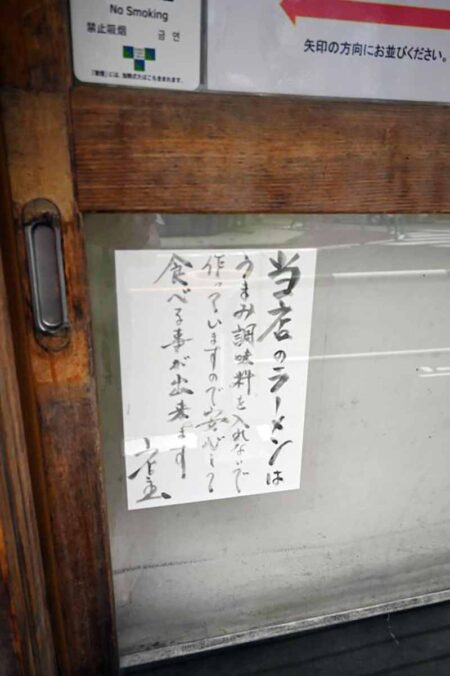
A message explaining that the shop does not use umami seasonings
The shop‘s green eaves and white noren curtain fit well with the area’s downtown atmosphere. Upon entering through the wooden sliding doors, I was warmly greeted by the owner, Fumio Hayakawa. The compact interior measures about 2 tsubo (about 6.6 square meters) in size. Unlike some other ramen eateries, Iikao has no ticket machine due to lack of space. I immediately ordered Tennen jozo (natural-brewed) shoyu ramen (¥850), one of the shop’s signature dishes.
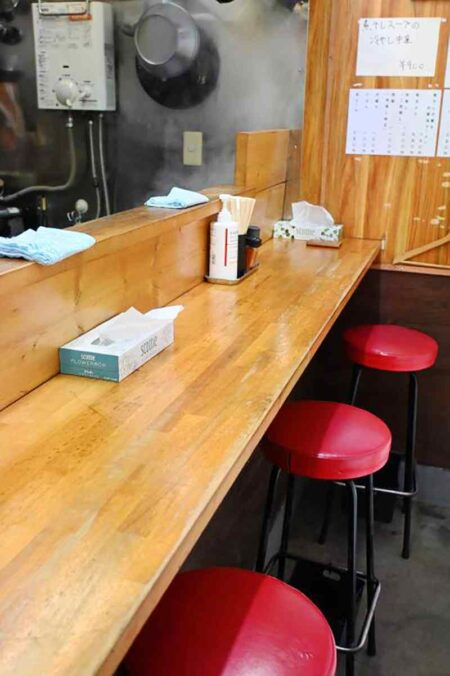
The shop can only seat four customers at a time.
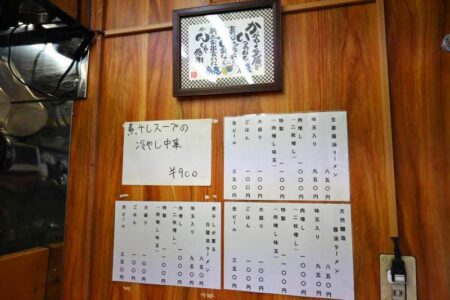
A menu is posted on the shop wall.
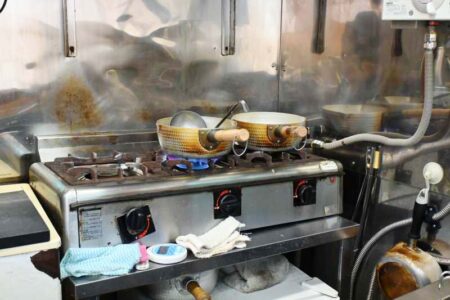
A view of the kitchen
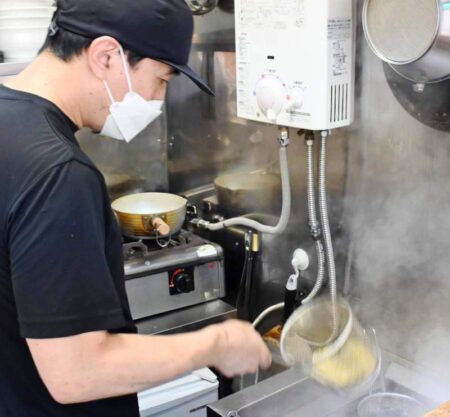
Draining boiled noodles
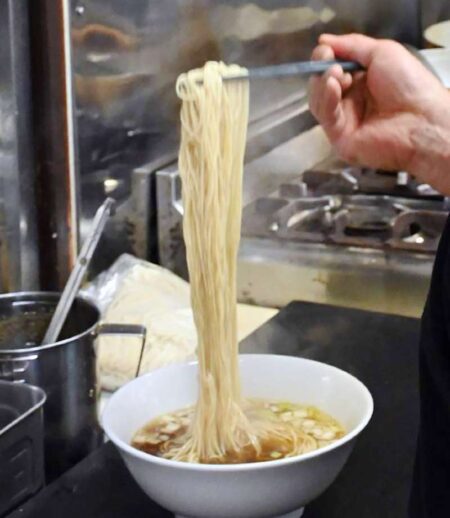
The flat noodles are very long.
The counter and the kitchen abut each other and I watched with interest as Hayakawa boiled the noodles, heated the soup and cut the chashu pork right in front of me and the food was ready in no time at all. Relatively simple in appearance, the dish was accented with mitsuba leaves and green onions. The soup had a rich soy-sauce aroma, a mellow umami flavor and struck me as pure and elegant.
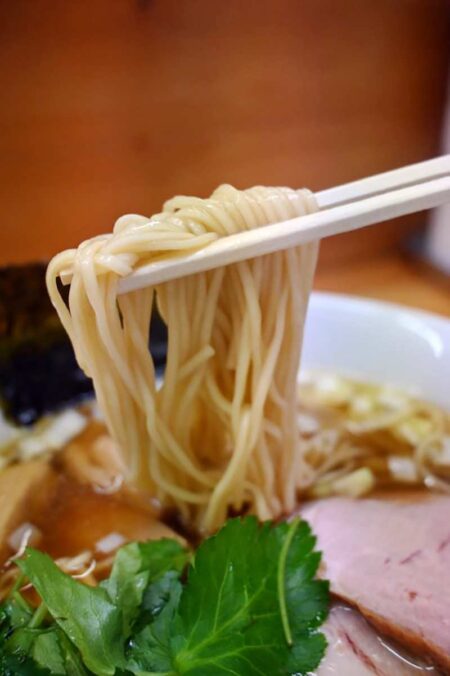
The noodles soak up the soup very well.
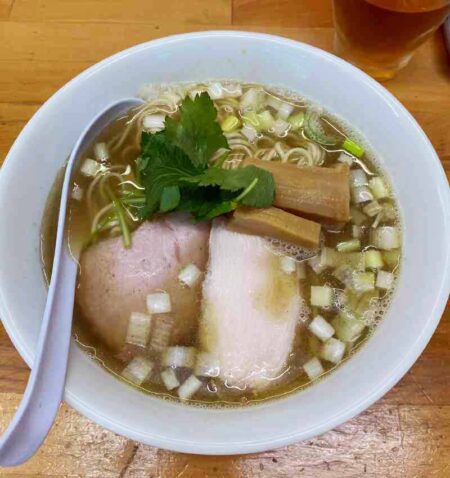
Niboshi-scented white shoyu ramen (\850) ? another of the shop’s signature dishes
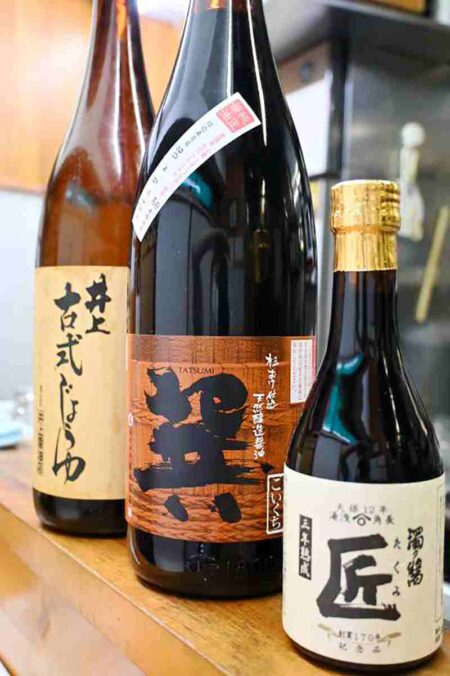
Three types of soy sauce, each with different characteristics
“I blend three different kinds of shoyu [soy sauce],” said Hayakawa, 49, as he laid out the bottles on the counter. Inoue Koshiki Soy Sauce from Okuizumo, Shimane Prefecture, has a light flavor; Tatsumi from Kajita Shoten in Ehime Prefecture has a strong umami taste; and Takumi from Yuasa Town, Wakayama Prefecture, has a rich aroma and flavor. Hayakawa blends this trio of sauces, each with its own characteristics, then skillfully combines the mixture with the soup.
To make his ramen, Hayakawa creates two different broths. One is made from chicken and a small number of pork bones, while the other — a seafood-based stock — comprises four types of dried fish, shiitake mushrooms, kombu and dried fish flakes. The shoyu ramen soup combines a 2:1 mix of these two broths, with the chicken and pork stock the dominant force, while another of the shop’s popular offerings, Niboshi-scented shiro shoyu ramen (¥850), is made almost entirely from the seafood broth, with just a smattering of the chicken and pork stock.
“The aroma and umami of the soy sauce is so robust that if the broth isn’t strong enough, the soy sauce prevails.” Hayakawa noted. “It was difficult to find the right balance between the soy sauce and the broth. It was basically a process of trial and error.” The final soup is extraordinary in that neither the soy sauce nor the broth dominates, giving rise to an overall mellowness.
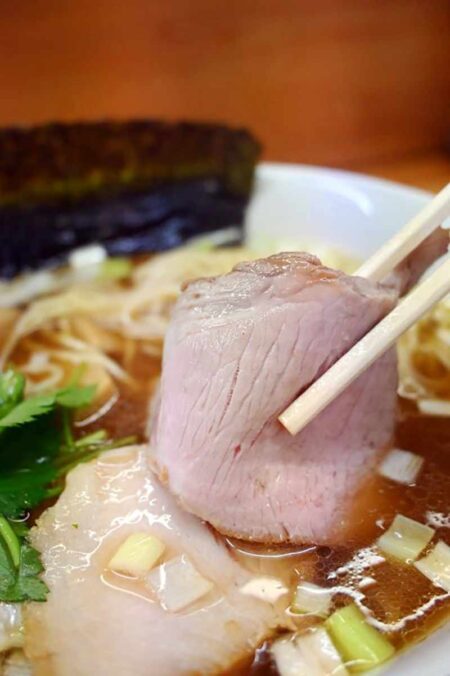
Homemade pork shoulder chashu
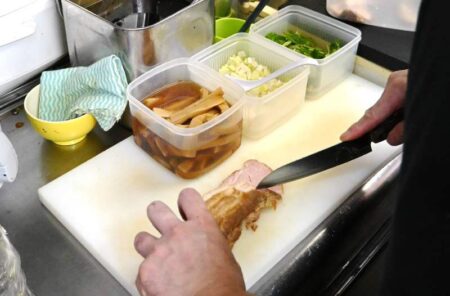
Cutting and preparing chashu pork
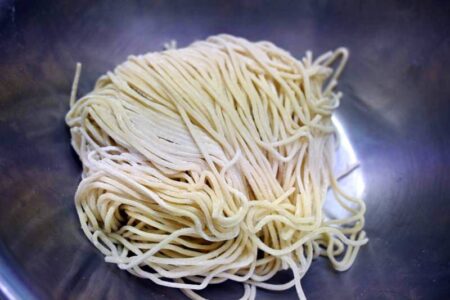
Flat noodles made from domestic wheat
Hayakawa uses flat noodles made from domestic wheat, purchased from a noodle mill. The noodles soak up the soup nicely, which makes Hayakawa quietly proud. Iikao uses three types of chashu meat, which Hayakawa prepares himself: low-temperature-cooked pork shoulder, chicken breast and slow-cooked pork belly. The soy sauce ramen is served with two pieces of pork shoulder and pork belly. Other ingredients include thick, seasoned bamboo shoots, mitsuba leaves and chopped green onions, which Hayakawa employs “to give [the dish] a Japanese flavor.” The leeks contribute sweetness and fragrance and the mitsuba further accentuates the aroma. Even after eating everything, my stomach did not feel heavy.
Taxi-driving life
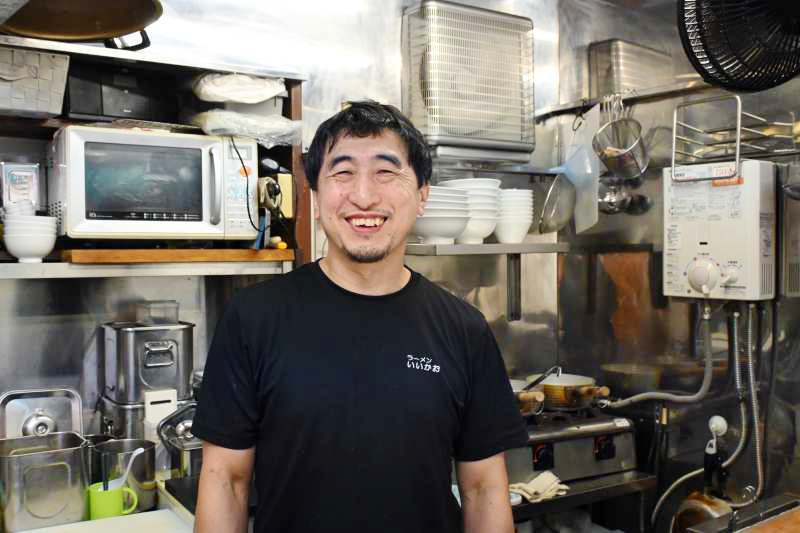
Inside the shop, a radio plays gently in the background and the brown wall panels impart a sense of age and the owner’s depth of taste. I felt as though I had been transported back in time to a Showa-era ramen store — the kind often depicted in old comic books. Surprisingly, however, Iikao only opened its doors about two years ago, in June 2020.
“I took the place over from an older colleague whom I met when we were working at a different ramen store.” Hayakawa explained. The colleague opened the first incarnation of the shop, which operated under the name “Showa Kayo (song) Show,” but eventually decided to return to his hometown, at which point he asked Hayakawa if he was interested in taking over. Hayakawa’s predecessor likely had a lot to do with the shop’s Showa-era atmosphere.
Hayakawa entered the ramen world when he was 32, getting his start at a major ramen chain restaurant, where he met his older colleague. Hayakawa was later recruited to help found a different ramen shop in Akihabara, and worked there until it closed in 2015. Although Hayakawa wanted to own his own ramen shop, he became a cab driver. He explained that taxi-driving offered a glimpse into the humanity of Tokyo life, allowing him to accumulate both money and interesting experiences while preparing to make a fresh start in the ramen industry.
“To be honest, I don’t think my ramen has any real impact; nothing really hits you,” Hayakawa said. “But I want to make ramen that tastes good to me and which gives my customers an ‘iikao’ [nice smile].”
Hayakawa’s words really warmed my heart.
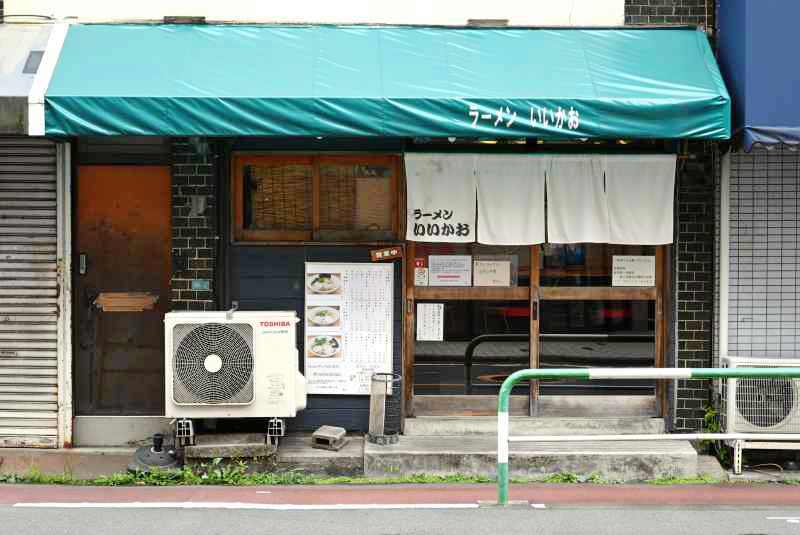
Iikao
Location: 4-35-2 Sugamo, Toshima Ward, Tokyo. Lunch: 11 a.m. to 2:30 p.m. Dinner: 6 p.m. to 8 p.m. In addition to its regular menu, the shop also offers seasonal specials. Closed Mondays, in principle, but a friend of Hayakawa borrows the space to serve beef and niboshi ramen on the first and third Mondays of each month. For more information, check the shop’s twitter account (@rameniikao).
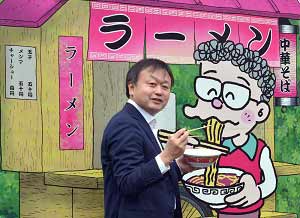
Futoshi Mori, Japan News Senior Writer
Food is a passion. It’s a serious battle for both the cook and the diner. There are many ramen restaurants in Japan that have a tremendous passion for ramen and I’d like to introduce to you some of these passionate establishments, making the best of my experience of enjoying cuisine from both Japan and around the world.
Japanese version
【ラーメンは芸術だ!】昭和ノスタルジーを感じるラーメンにほっこり、東京・巣鴨の「いいかお」

"JN Specialities" POPULAR ARTICLE
-

The Japan News / Weekly Edition (12/12-12/18)
-
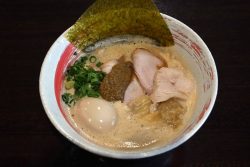
Noodle Dining Shunsai / Rich Oyster Ramen to Savor at Odasaga; Experienced 68-year-old Owner Creates Numerous Ramen Varieties
-

The Japan News / Weekly Edition (12/5-12/11)
-

People Keep Loved Ones’ Ashes Close in Special Jewelry, Small Urns as Unique Way to Memorialize Them
-
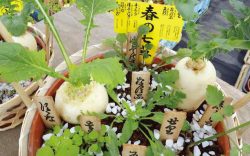
The Japan News / Weekly Edition (12/19-12/25)
JN ACCESS RANKING
-

Tokyo Economic Security Forum to Hold Inaugural Meeting Amid Tense Global Environment
-

Keidanren Chairman Yoshinobu Tsutsui Visits Kashiwazaki-Kariwa Nuclear Power Plant; Inspects New Emergency Safety System
-

Imports of Rare Earths from China Facing Delays, May Be Caused by Deterioration of Japan-China Relations
-

University of Tokyo Professor Discusses Japanese Economic Security in Interview Ahead of Forum
-

Japan Pulls out of Vietnam Nuclear Project, Complicating Hanoi’s Power Plans



